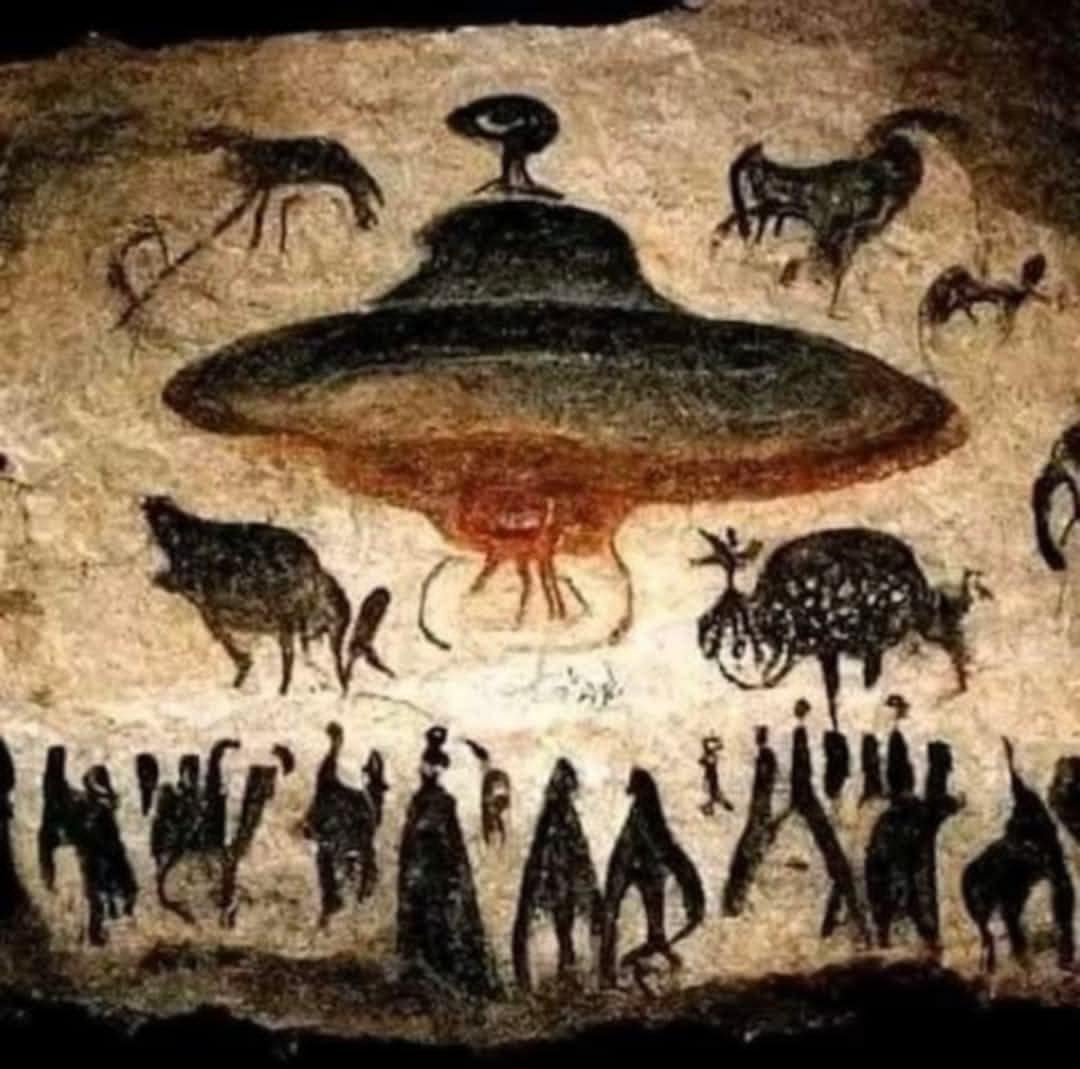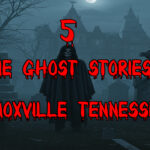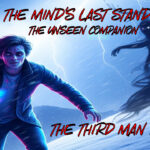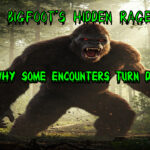
Just look around you. Imagine for a moment stepping back in time, not just decades or centuries, but millennia. Imagine a world painted not on canvas, but on the very walls of the earth, deep within caves, etched onto rock faces under vast, starlit skies. I’m talking about cave art – the oldest art known to humankind. For centuries, these images have captivated us, whispered secrets across time.
Mainstream archaeology offers its explanations, of course. Shamans, spirits, myths, symbols of the natural world. But when you truly *look* at some of these ancient artworks, when you let your mind be open to possibilities beyond the conventional, you might begin to feel a sense of… unease. A feeling that perhaps, the conventional story falls short. It doesn’t quite capture the *strangeness*, the *otherworldliness* that comes from certain cave paintings.
Tonight, I want to invite you on a journey. A journey that dares to ask a question that rewrites human history: What if some of these ancient artists weren’t depicting spirits or myths as we understand them today? What if they were recording something far more extraordinary? What if they were documenting encounters with beings not of this Earth – beings from other worlds?
It’s a bold idea, I know. It challenges everything we’re taught about our past. But I believe the evidence is there, etched in stone, waiting for us to truly see it. We’re going to explore 5 remarkable sites tonight, places where the rock art speaks in a language that, I believe, points unmistakably to ancient alien contact. Prepare to open your minds, because what we are about to uncover might just change the way you see human history forever.
Chapter II: Barrier Canyon – The Spirit Figures Speak of Star Visitors
Let’s journey first to the remote canyons of Utah, in the American Southwest. Imagine a landscape of towering red rock, sculpted by time and wind, a place of profound silence and ancient mystery. Here, in Barrier Canyon, and in the surrounding Glen Canyon and Canyonlands areas, we find some of the most mysterious rock art on the planet. Created by the little-understood Barrier Canyon Culture, these paintings are incredibly old – some possibly dating back 9,000 years. Think about that for a moment – 9,000 years! These artists were closer to the dawn of human civilization than we are to them. Were they, perhaps, more attuned to realities that we, in our modern world, have become blind to?
Now, picture this: massive figures dominating the rock panels. We call them “Spirit Figures,” but what spirits are these? They are *huge*, often life-sized, sometimes even larger, towering over seven feet tall! Why such scale? Were they depicting beings of immense stature, beings not of this Earth?
Look closer at their forms. Elongated, slender bodies, unlike any human proportions. And the limbs – or lack thereof. Often, arms and legs are either absent entirely or reduced to mere stubs. Are these human bodies? Or something… else? Something adapted to a different environment, perhaps with different gravity? Could these beings have moved in ways we don’t understand, perhaps through levitation or advanced technology, rendering limbs less important?
And then there are the heads. Oh, those heads. Often featureless, blank. Or sometimes… with these enormous, empty eye sockets, or these large, rounded… “bug-like” eyes, as some have described them. Where are the noses, the mouths, the ears, the familiar features of a human face? Are these the faces of humans? Or something… other worldly?
And notice, on some of these figures, projections extending from their heads, like… antennae. Antennae! What could prehistoric humans know of antennae? Unless… unless they were depicting what they actually *saw*. Could these be communication devices? Sensory organs unlike our own? Could they be interacting with something beyond our normal perception, something in the cosmos?
Finally, consider the bodies themselves. They are often filled with paint, with intricate patterns, cross-hatching, wavy lines, dots, zigzags, even snake-like designs. Are these just decorations, as the skeptics claim? Or could they represent something more? Could they be depicting internal structures, advanced suits, or perhaps energy fields that surrounded these beings?
When you put it all together, when you truly *see* these Barrier Canyon Spirit Figures, can you honestly say they look like anything from our known human history, our mythology, our shamanic traditions? Or do they whisper of something… else? Something… extraterrestrial? I believe these ancient artists were not just imagining things. I believe they were witnesses, recording encounters with beings from the stars. They were depicting what they saw, with the reverence and awe that such an encounter would inspire.
Chapter III: Sego Canyon – Fremont Culture’s Starry Visitors?
Now, let’s journey again to Utah, but this time to Sego Canyon, not far from Barrier Canyon. Here, we find a fascinating layering of ancient art. We see the familiar Barrier Canyon Style, but also the art of a later culture – the Fremont people. The Fremont were agriculturalists, who came after the hunter-gatherer Barrier Canyon Culture. And in their art, we find yet more intriguing figures that fuel the ancient alien mystery.
It’s the Fremont figures in Sego Canyon that particularly draw our attention. These figures often have distinctive… trapezoidal bodies. Imagine a human form, but instead of a torso, a shape like a triangle or a trapezoid, wider at the shoulders, narrowing towards the base. Is this how humans are built? Or are we looking at depictions of beings with a fundamentally different biology?
And then there are the headdresses. Oh, the headdresses of the Fremont figures! They are often incredibly elaborate, radiating outwards, upwards, like… complex structures. Are these just simple feather headdresses, as some archaeologists suggest? Or do they look more like… technology? Communication devices? Energy collectors? Advanced headgear of some kind? When you look at the intricacy, the almost mechanical appearance of some of these headdresses, it’s hard to dismiss them as mere decoration.
Many Fremont figures also have large, prominent eyes, or sometimes, just empty eye orbits, staring out from the rock face. And like the Barrier Canyon figures, facial details are often minimal or absent. Again, we are confronted with faces that are not quite human, features that seem to defy our earthly norms.
When you consider the trapezoidal bodies, the elaborate, almost technological headdresses, the large, staring eyes… can you truly say these are just depictions of ordinary humans, or spirits from earthly mythology? Or are we seeing something else entirely? Could the Fremont artists, like their Barrier Canyon predecessors, have also witnessed beings from the stars, and recorded their encounters in the rock art of Sego Canyon? Perhaps the Fremont Culture continued a tradition, a memory, of alien visitation in this region, adding their own unique artistic style to the ongoing narrative etched in stone.
Chapter IV: Valcamonica – Astronauts in the Alps?
Now, let’s travel across the ocean, to the beautiful Valcamonica valley in the Italian Alps. Here, we find one of the largest collections of prehistoric petroglyphs in the world – a vast outdoor art gallery etched onto the rocks over thousands of years. We’re talking about art created from the Epipaleolithic period, stretching all the way to Roman times. But it’s the art from the Camunian civilization, during the Iron Age, that truly captures our attention tonight.
Here, amongst the thousands of figures, we find depictions that are… startling. Figures with large, round, or oval heads. And when you look at them, what is the first thing that comes to *your* mind? Do they look like sun symbols, as the skeptics insist? Or do they look remarkably like… helmets? Helmets worn by beings operating in an environment different from our own – perhaps… space?
And it’s not just the heads. Look at the lines, the rays that often emanate from these round heads. Is this just artistic flair, some decorative element? Or could it represent energy? Radiation? Or even… communication signals, broadcasting from these “helmeted” figures?
But the most compelling images from Valcamonica are perhaps those that show… objects in the sky. Disc-shaped, rectangular shapes, hovering above the ground, sometimes even associated directly with these “astronaut” figures. What else could these be but objects in the sky? Objects that are not stars, not clouds, not birds… Could these be the crafts these beings arrived in? Could these be… Unidentified Flying Objects, depicted in prehistoric art?
And consider the objects held by some of these figures. Are they simply spears and shields, the tools of ancient warriors? Or do some of them have a more… technological appearance? Could they be devices, tools, or even… weapons, of a kind we don’t fully recognize, from a civilization far beyond our own?
Imagine the scene in ancient Italy. Imagine the people of Valcamonica witnessing these beings descend from the sky in these “objects,” beings wearing what appear to be “helmets.” It would be an event of unimaginable significance, a moment etched forever into their collective memory, and recorded for posterity in the rock art of their valley. Were these aliens just observed? Or did they interact with the people of Valcamonica, perhaps sharing knowledge, perhaps influencing the course of human history in ways we are only just beginning to understand? The standard history books tell us humans only dreamed of space travel recently. But what if the ancients *knew* about it firsthand? What if Valcamonica is telling us exactly that?
Chapter V: Tassili n’Ajjer – Round Heads of the Sahara
Now, let’s journey to a vastly different landscape – the Sahara Desert, to the Tassili n’Ajjer plateau in Algeria, North Africa. Here, amidst the stark beauty of the desert, we find another incredible treasure trove of rock art, spanning millennia. And within this vast collection, the art from the “Round Head Period,” among the oldest layers, is particularly… striking.
The figures from this period are dominated by… large, round heads. Imagine figures with bodies, sometimes ornate or structured, but always topped by these enormous, round or bulbous heads, often disproportionate to their bodies. When you see these “Round Head” figures, does it not evoke something… familiar? Something from our modern imagination? Do they not bear a striking resemblance to… classic depictions of grey aliens? Or perhaps even the “Martians” of science fiction lore?
And consider the faces – or rather, the *lack* of faces. Typically, these round heads are blank, featureless. No eyes, no noses, no mouths, no human expressions. Just smooth, rounded surfaces. Are these the faces of earthly beings? Or are they the masks, the helmets, or even the *actual* faces of beings whose biology is so different from our own that our artists struggled to capture them in familiar human terms?
Some of these Tassili figures also appear to… float. They lack clear grounding lines, seeming to hover or levitate above the ground. Is this simply artistic convention? Or could it be a literal depiction? Could these beings have possessed the ability to defy gravity, to move in ways that prehistoric humans could only describe as… floating?
And look at the bodies. While the heads are the most striking feature, the bodies are not always simple. Some are depicted with linear elements, structured forms, suggesting… clothing? Suits? Could these be advanced suits, designed to protect these beings in Earth’s atmosphere, in the harsh environment of the Sahara?
When you examine the Round Head art of Tassili n’Ajjer, it’s hard to escape the feeling that you are looking at something… profoundly alien. Are these the “grey aliens” of modern UFO lore, depicted in the rock art of the Sahara Desert thousands of years ago? Does this art provide evidence that these beings have been visiting our planet for far longer than we imagine? Could the ancient artists of Tassili n’Ajjer have been recording encounters with extraterrestrial visitors, leaving us a message in the heart of the Sahara that echoes across the ages?
Chapter VI: Kimberley – Elegant Beings from Another World
Our final journey takes us to the remote Kimberley region of Western Australia, a land of ancient landscapes and profound Aboriginal spirituality. Here, hidden amongst the sandstone cliffs, we find the Bradshaw figures, also known as Gwion Gwion art. These are some of the oldest rock paintings in the world, predating even the more famous Wandjina art of the region. Estimates suggest some of these Bradshaw figures could be up to 17,000 years old, or even older. Imagine – 17,000 years ago, artists were creating these images, leaving us messages across the vastness of time.
And what messages they are! Look at the Bradshaw figures. Notice the elegance, the grace. Elongated, slender forms, depicted with incredibly fine lines, often in dynamic, flowing poses. Are these typical depictions of human ancestors, as mainstream archaeology claims? Or do they possess an otherworldly refinement, a delicate beauty that suggests something… different?
Consider their attire. They are often adorned with elaborate headdresses, tassels, and what appears to be ornate clothing. Are these just simple ceremonial decorations, body paint, as we are told? Or could they be more complex? Perhaps functional elements of their beings, or even… technological components integrated into their very appearance?
And again, we see variations in head shapes. Some Bradshaw figures have rounded heads, others elongated. Again, we see deviations from typical human forms. Is this simply artistic license, or a reflection of the actual beings they were depicting? Beings that perhaps did not share our exact anatomy, beings that were… not entirely human?
When you study the Bradshaw art, you don’t get a sense of crude, primitive depictions. Instead, you see sophistication, refinement, even… elegance. Could these figures represent a more advanced civilization that visited Earth in the distant past? Perhaps a civilization that was not just technologically advanced, but also… aesthetically refined? Perhaps the encounters in Australia were different, more peaceful, more focused on observation and less on direct intervention? What did the artists of the Kimberley know? What did they witness? Their art hints at a history far grander, more mysterious, and more… cosmic, than we are generally led to believe.
Chapter VII: Common Threads and Broader Implications
Across five remarkable sites, spanning continents and millennia, we have seen cave art that defies easy explanation. From the towering Spirit Figures of Barrier Canyon and the Fremont art of Sego Canyon to the helmeted astronauts of Valcamonica, the Round Heads of Tassili n’Ajjer, and the elegant Bradshaw figures of Kimberley, we see recurring themes that resonate across cultures and time.
Unusual heads, elongated bodies, depictions of objects in the sky, a pervasive sense of otherworldliness – these motifs appear again and again. Is it truly just coincidence that these elements emerge independently in such diverse locations and cultures, created by people who, in the conventional view, had no contact with each other? Or does this repetition point to something more profound? Does it suggest a shared, global experience, a series of encounters with something… extraordinary? Something… alien?
We are told that ancient humans were primitive, their minds filled with simple myths and earthly concerns. But what if the very definition of “primitive” is flawed? What if our ancestors possessed a different kind of awareness, a heightened sensitivity to the cosmos, that we have lost in our modern, technologically saturated world? What if they were not just passive recipients of earthly phenomena, but active witnesses to cosmic events, recorders of encounters that defy our current understanding of history?
The conventional view struggles to fully account for the sheer strangeness, the persistent anomalies, in this cave art. Explanations based solely on shamanism, symbolism, and misinterpretation feel… incomplete. They lack the spark of wonder, the sense of profound mystery that these images evoke.
Chapter VIII: Conclusion – Open Your Mind to the Possibilities
Tonight, we have embarked on a journey into the heart of ancient mysteries, exploring cave art that, we believe, offers a tantalizing glimpse into a hidden history. The idea that these ancient artworks might depict alien contact is, undeniably, a fringe theory. Hard, definitive proof, in the scientific sense, remains elusive. But as we have seen, the visual evidence is compelling. The recurring anomalies, the persistent motifs, the undeniable sense of otherworldliness – they all converge to suggest a possibility that we, as a species, can no longer afford to dismiss out of hand.
I implore you to look at these images again. Study them. Contemplate them. Let them challenge your assumptions about the past. Question the conventional narratives. Dare to entertain the possibility, however audacious it may seem, that our ancestors were not alone. That they witnessed things that we, in our modern world, struggle to comprehend. That they left us a message, etched in stone, across the vastness of time, a message about… contact.
Are we alone in the universe? It is the fundamental question that has driven human curiosity since we first looked up at the stars. Perhaps, just perhaps, the answer is not solely “out there,” in the distant galaxies. Perhaps part of the answer, a crucial piece of the puzzle, has been here all along, on our own planet, written in the ancient art of our ancestors, waiting patiently for us to truly… see it.

 5 True Ghost Stories of Knoxville Tennessee
5 True Ghost Stories of Knoxville Tennessee  The Minds Last Stand: The Third Man Factor
The Minds Last Stand: The Third Man Factor  Shadow Figures: They’ve Been Watching You All along
Shadow Figures: They’ve Been Watching You All along  The Bigfoot Mystery of Mt Saint Helens
The Bigfoot Mystery of Mt Saint Helens  Bigfoot’s Hidden Rage: Why some Encounters turn Deadly
Bigfoot’s Hidden Rage: Why some Encounters turn Deadly  Cheating Death at the Quantum Level
Cheating Death at the Quantum Level  Into the Unknown: Exploring the Michigan Triangle
Into the Unknown: Exploring the Michigan Triangle  The Shag Harbour UFO Incident
The Shag Harbour UFO Incident